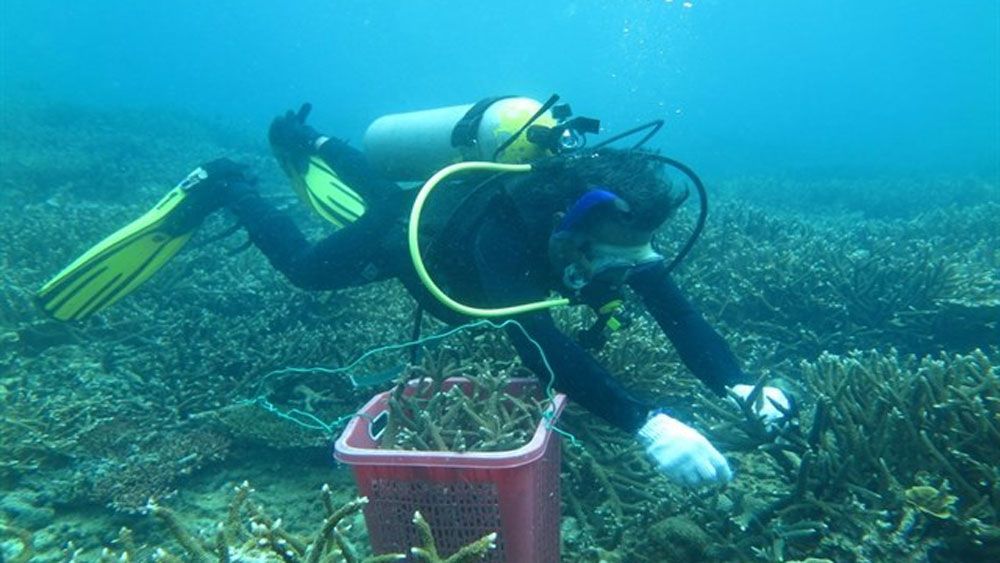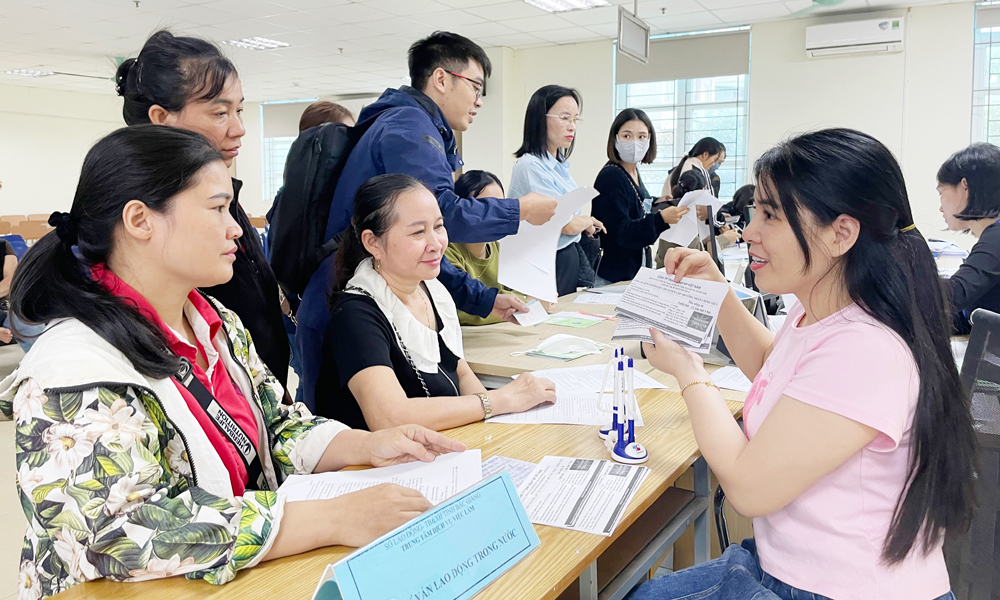Con Dao conservationists take steps to save coral
Like similar spots, climate change and human activities are putting coral reefs under great pressure, leading to a decline in coverage and coral bleaching. Marine experts and researchers at Con Dao National Park have put a great deal of effort into recovering and developing the coral population. Their efforts have paid off.
 |
|
A researcher from Con Dao National Park selects seed corals for transplantation. |
More than 1,500 branches of corals have been transplanted onto the seabed, 7 to 8 metres underwater. The recovery rate is more than 95 percent, according to Tran Dinh Hue, deputy head of the forest management board of Con Dao National Park.
In 2018, Con Dao National Park coordinated with the Nha Trang Institute of Oceanography to recover and develop the coral population over an area of 40 hectares.
“The project aims to protect more than 2,000 ha of coral reefs in Con Dao and raise awareness among local fishermen and visitors about the importance of coral reefs on the verge of degradation,” Hue said.
The project runs from 2018 to 2020 with an estimated budget of 1.4 billion VND (60,000 USD) in three areas of Con Dao where coral reefs have been slow to recover: Dat Doc, Hon Tai and Bai Canh. It aims to transplant 2,500 branches of corals over a total area of 3ha.
The marine experts and researchers of Con Dao National Park, with diving equipment, GPS and specialised devices, dive under the sea to track the condition of the coral ecosystem. They study the hard coral and soft coral cover as well as the rate of dead coral.
The first phase of the project focuses on offering training to the local community to improve their awareness of marine protection and coral recovery techniques; recovering 1ha of coral with more than 1,500 coral branches transplanted.
In the second phase, another 2ha of corals will be recovered.
Coral branches are transplanted by being placed in reef balls – the circular concrete structures with holes and nodules for organisms to swim through and live in.
Each reef ball is 0.8 metre high, 0.6 metre wide and 5cm thick. About 10 branches of coral which are from 10 to 30 cm long are placed on each concrete reef ball at depths of 7 to 8 metres underwater. Seven species of coral belonging to three varieties of Acropora, Montipora and Pocillopora and two families of Acroporidae and Pocilloporidae were chosen to be recovered.
There have been 150 reef balls with 1,560 branches of corals anchored to the seafloor so far. The rate of recovery is 95 per cent. It is estimated that after one year, corals will be 15 to 20 cm tall and after two to three years, the transplanted corals will grow like normal ones, according to Hue.
The reefs cover less than one per cent of the earth’s surface and less than two per cent of the ocean floor but reefs provide food and shelter for about one-quarter of all ocean species, according to the Ocean Portal, an organisation aimed at increasing the “public’s understanding and stewardship of the ocean”.
In the future, local fishermen will take part in the recovery work with the park’s staff. They will be paid to do the coral transplantation under the sea.
Con Dao National Park, covering nearly 6,000 ha on land and 14,000 ha of water, is an archipelago with 16 islands located some 80 km off the coast of southern Vietnam.
Source: VNS/VNA
 Bắc giang
Bắc giang












Reader's comments (0)